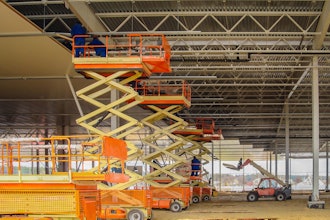
At a time when a series of major supply chain disruptions has forced suppliers and distributors to revisit contracts and search for new partners, negotiating power has become increasingly important.
This is especially true for smaller companies that are trying to compete with their larger and more consolidated peers. It’s much more difficult for small companies to secure favorable terms, since they aren’t capable of purchasing the same quantities of products and materials.
This is where buying groups come in. By combining the purchasing power of many companies, these groups increase the leverage their members have in negotiations over contracts and prices.
Buying groups vs. large distributors
Large distributors have a significant advantage over their smaller counterparts because they can lock in lower prices for higher volumes of goods and materials. In times of scarcity, these companies are more likely to have high-demand items in stock with privileged access to new products.
While small businesses comprise the vast majority of all firms in the country and generate two-thirds of net new jobs, large companies have more efficient supply chains and greater negotiating power. One of the reasons large suppliers and distributors are in a stronger position to control costs and offer lower prices to their customers is that they can centralize their data collection, logistics management and other processes. This eliminates silos, provides greater visibility, and streamlines the delivery of products and services.
When small supply chain companies join a top tier buying group, they immediately acquire many of these benefits – as well as the ability to negotiate better rebate deals and discounts. There are hundreds of buying groups in the U.S. where GPOs represent a $5 billion market. Small companies in the supply chain sector are especially reliant on these groups to remain competitive.
Buying groups have never been more important
The past two years have left supply chains reeling. From the massive production and delivery bottlenecks and slowdowns caused by the COVID-19 pandemic to the outbreak of war in Ukraine just as supply chains were beginning to stabilize, companies in the sector have been confronted with one crisis after another. This has led to an industry-wide reconsideration of many fundamental issues, including which types of partnerships companies pursue and digitization.
According to a recent Gartner survey, 87% of industry professionals say they will make investments to increase resilience over the next two years, while 89% say they will focus on making their supply chains more agile. One way supply chain leaders will pursue these goals is through regionalization — the process of bringing supply chain operations closer to end markets — a strategy which will make them less susceptible to geopolitical shocks, pandemics and other future crises that affect the global economy. McKinsey reports that 90% of supply chains “expect to pursue some degree of regionalization during the next three years.”
Regionalization presents a significant market opportunity for smaller companies in the supply chain sector as their larger competitors are often more internationally distributed and vulnerable to global volatility. The small companies in the best position to attract new partners are the members of buying groups, which can provide the advantages of regionalization along with the lower prices and efficiencies typically associated with big companies.
Maximizing value for buying group members
Rebates are critical for buying groups because they give suppliers, distributors and their partners an incentive to keep doing business together. But rebates have to be managed properly to provide the full range of these benefits.
All buying groups add value by negotiating better terms than a member company could hope to get on their own, but many groups miss opportunities to add value in other ways.
In addition to negotiating favorable terms, a buying group can add value by:
- Keeping members informed of the rebate deals they’re eligible for and how they can increase their rebate earnings
- Paying rebates promptly and accurately
- Using a centralized product information management system, universal product codes for identification, and product categories that allow the eligible products to be assigned to each rebate deal
- Publishing categorized product data to members, collecting member purchase data at the product level, and generating rebate reports that allow the member to 1) accurately accrue for rebate and 2) understand their true net cost on a per-product basis.
These are just some of the strategies buying groups can use to provide value to their members. As buying groups become increasingly critical for independent supply chain companies to remain competitive, these companies will gravitate towards the buying groups that provide the most value.
Dan Wood is the head of solutions consulting at Enable.






















